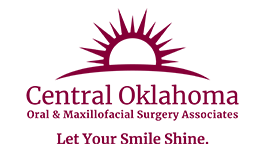25 Apr 4 Types of Facial Traumas That Can Be Treated with Dental Procedures
 Facial trauma is often very complicated and can require an oral surgeon. Maxillofacial trauma refers to bone, dental, and soft tissue injuries.
Facial trauma is often very complicated and can require an oral surgeon. Maxillofacial trauma refers to bone, dental, and soft tissue injuries.
Facial trauma can happen in many different ways, but the most common causes are road accidents, physical assaults, sports-related injuries, falls, and even gunshot wounds. We’re going to look at the way 4 different types of facial traumas can be treated with dental procedures.
Dental Procedures Used to Treat Facial Trauma
Facial trauma can lead to serious disfigurement if patients do not receive proper treatment, and it can even cause a loss of facial functionality. Some dental procedures that treat facial trauma include corrective jaw surgery, bone grafting, soft tissue grafting or reconstruction. Let’s explore the types of facial trauma these procedures can treat.
1. Treating Facial Fractures
Known as maxillary fractures, this type of injury is often split into three regions; the lower, upper and mid maxilla. These types of injuries need to be dealt with immediately to ensure that the patient can breathe properly. In some cases, a patient can experience a closed or impaired airway which can be fatal.
Dental procedures used to treat this kind of injury range from securing airways to repositioning the bones for functional and aesthetic purposes. This treatment usually involves dental braces and hardware such as microplates and resorbable plates.
2. Treating Cheekbone Fractures
If a patient’s cheekbone looks flat, they experience numbness, and are struggling to chew, then they have a fractured cheekbone.
This kind of facial trauma requires setting the bone with dental hardware like screws and plates. A cheekbone fracture treated in this way will take between four to six weeks to fully heal.
3. Treating Dental Injuries
A dental injury, or a dentoalveolar injury, refers to the teeth and soft tissue around them. Depending on the severity of the injury, treatments are usually done in stages.
Before any further treatment can be done, the fractures need to be stabilized with dental hardware. Once this is in place, the reconstruction of the injured area can begin using bone grafts and implants and in some cases, dental prosthetics. It can take four to six months for the recovery time.
4. Treating Jaw Fractures
The most common way for a fractured jaw to be treated is by immobilizing or wiring the jaw together. Another way to deal with this facial trauma is through open reduction, using plates and screws in the jaw. Patients can expect the recovery time to take up to six weeks.
Book an Appointment
Treating facial trauma with the correct dental procedures can reduce the pain and restore the functionality and appearance of the patient’s face. If you are suffering from facial trauma, book a consultation with COOMSA immediately.
